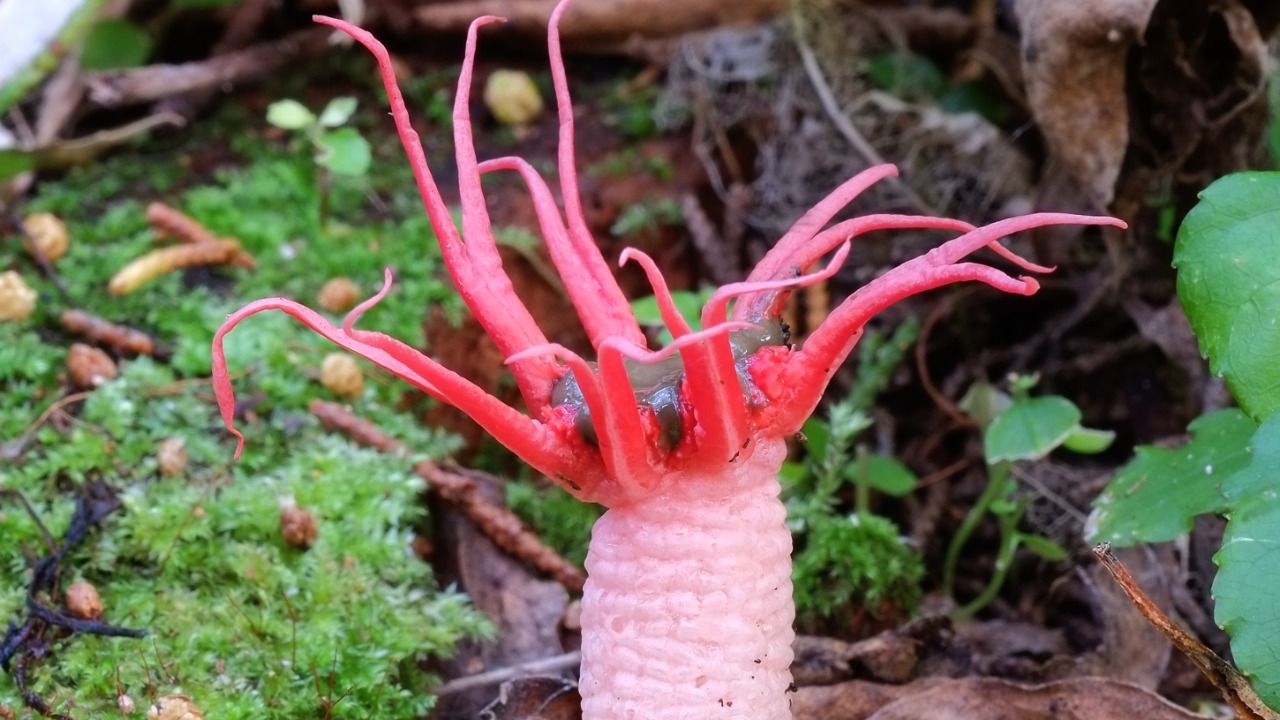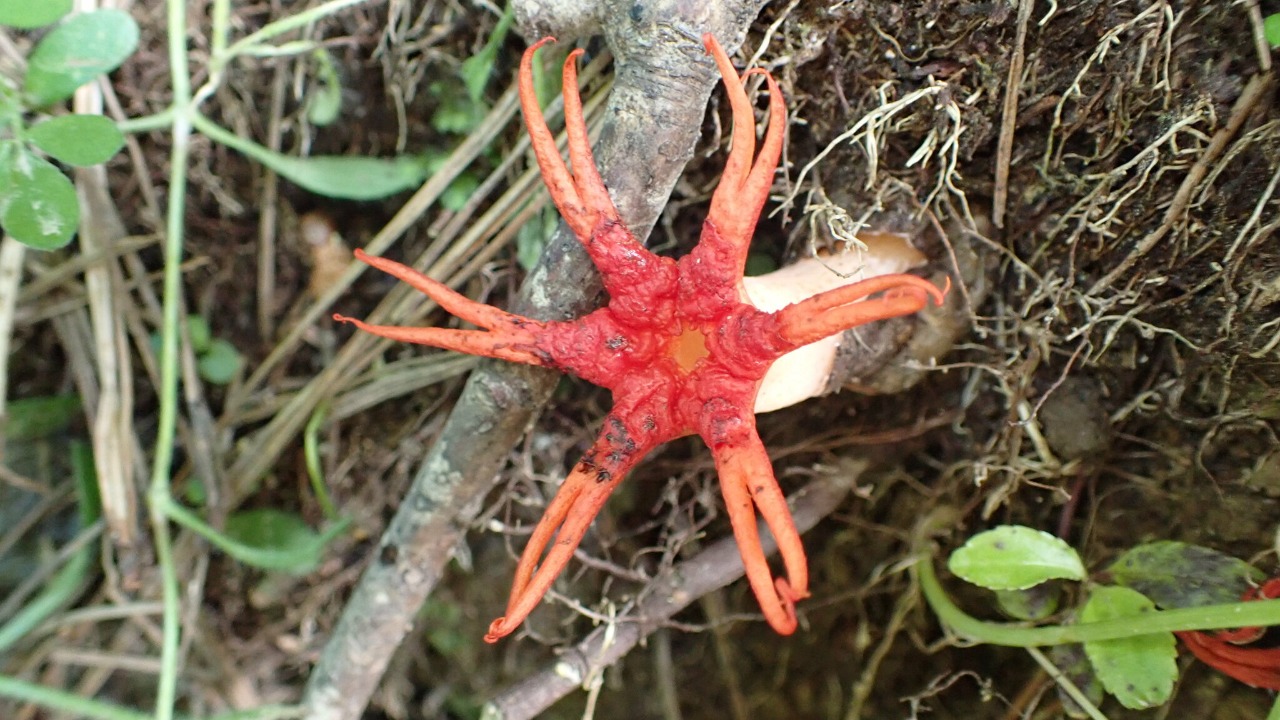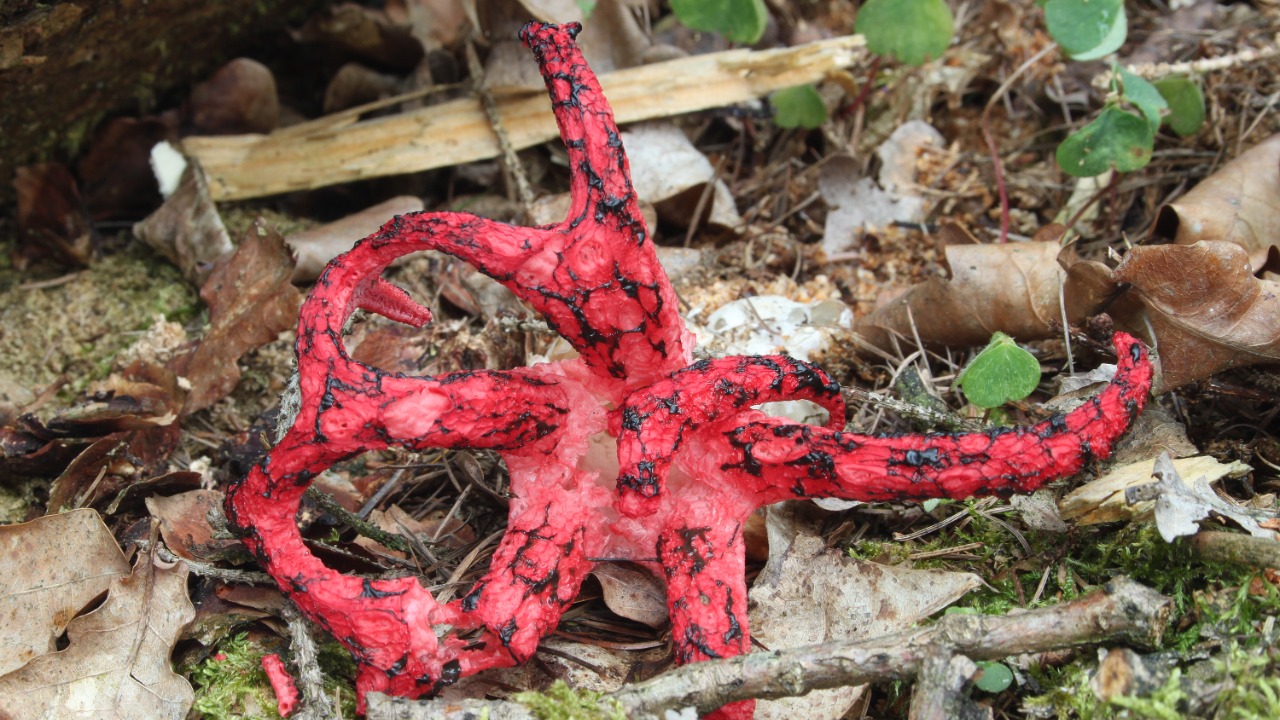
In the mysterious world of fungi, some species appear so otherworldly that they could easily be mistaken for alien life forms. One such discovery has captured the attention of scientists and enthusiasts alike: a peculiar fungus thriving in volcanic rock. Delving into the intriguing characteristics, potential origins, and ecological significance of this alien-looking fungus reveals insights into a fascinating domain of life that continues to surprise and intrigue.
The Fascinating World of Fungi

The diversity within the fungal kingdom is extraordinary, encompassing an estimated 2.2 to 3.8 million species. These organisms exhibit a wide array of forms, from the common button mushroom to the complex structures of mycelium networks. Fungi play crucial roles in ecosystems as decomposers, symbionts, and even pathogens, recycling nutrients and fostering symbiotic relationships with plants. This vast diversity allows them to inhabit nearly every environment on Earth, from dense forests to arid deserts.
Among these myriad forms, some fungi stand out due to their bizarre and alien-like appearances. The newly discovered fungus in volcanic rock boasts features that challenge conventional perceptions of terrestrial life. Its unique morphology and vibrant colors evoke images of science fiction landscapes, making it a subject of fascination for mycologists and hobbyists alike. Such distinctive characteristics often lead to comparisons with otherworldly entities, highlighting nature’s creativity and the adaptive prowess of fungi.
Historically, the discovery of peculiar fungi has often sparked debates about the potential existence of extraterrestrial life. Instances such as the orgasm-inducing mushroom found in Hawaii or the ethereal glow of bioluminescent fungi in rainforests have captivated imaginations and stirred curiosity. These organisms, with their unusual traits, continue to challenge our understanding of biology and inspire inquiries into the potential origins of life beyond Earth.
The Discovery in Volcanic Rock

The peculiar fungus was discovered in the rugged, inhospitable terrains of a volcanic landscape. These environments, characterized by harsh conditions such as extreme temperatures and high acidity, pose significant challenges to life. Despite these adversities, the fungus not only survives but thrives, suggesting unique adaptations that enable it to exploit the niche opportunities presented by volcanic rock. The specific location of the find, in an area known for frequent geothermal activity, adds to the intrigue surrounding this organism.
To accurately identify and understand this fungus, researchers employed a combination of DNA analysis and advanced microscopy techniques. Genetic sequencing allowed scientists to pinpoint its phylogenetic position and explore potential evolutionary links with other species. Microscopic examination further revealed intricate structural details, contributing to a comprehensive understanding of its biology. These methods provided critical insights into the fungus’s taxonomy and ecological niche, opening new avenues for mycological research.
The initial reactions from the scientific community were a mix of excitement and curiosity. Hypotheses regarding the fungus’s origins suggest it may have evolved unique physiological traits to withstand the extreme conditions of its environment. Some researchers speculate that its existence might help us understand the process of ecological succession in volcanic ecosystems, where life gradually colonizes and stabilizes the landscape following volcanic eruptions.
Ecological and Evolutionary Significance

Fungi are indispensable components of volcanic ecosystems, contributing to nutrient cycling and promoting ecological stability. In these environments, they play a pivotal role in breaking down organic matter and facilitating the establishment of plant communities. The newly discovered fungus likely participates in these processes, aiding in the transformation of barren volcanic rock into habitable soil. Its presence underscores the resilience and adaptability of life in extreme habitats.
The ability of this fungus to thrive in such a challenging environment suggests a suite of evolutionary adaptations. These may include specialized enzymes capable of breaking down tough volcanic minerals or symbiotic relationships with other microorganisms, enhancing its survival prospects. Understanding these adaptations can provide valuable insights into the mechanisms that enable life to persist under extreme conditions, with potential implications for studying life forms on other planets.
Studying such fungi is crucial for grasping the full scope of biodiversity and informing conservation efforts. As volcanic ecosystems are often isolated and unique, preserving their biological integrity is vital for maintaining global biodiversity. Insights gained from these studies can inform conservation strategies aimed at protecting these fragile habitats from human impact and climate change.
Comparisons to Other Alien-like Fungi

Among the ranks of alien-like fungi is Clathrus archeri, commonly known as the Devil’s Fingers. This fungus is renowned for its striking, tentacle-like structures that emerge from a gelatinous egg, evoking imagery of extraterrestrial organisms. The eerie resemblance to the newly discovered species highlights the diverse morphological possibilities within the fungal kingdom and sparks discussions about convergent evolution.
The mystery of Prototaxites adds another dimension to our understanding of ancient fungi. These colossal fossilized structures, which date back nearly 400 million years, have puzzled scientists with their massive size and ambiguous classification. While some consider them ancestors of modern fungi, others debate their exact nature. The enigmatic history of Prototaxites invites comparisons with contemporary alien-like fungi, offering a glimpse into the evolutionary pathways that have shaped fungal diversity.
Fungi with unusual appearances captivate both the public and scientists, influencing research directions and permeating popular culture. The allure of these organisms lies in their ability to challenge preconceived notions of life and inspire new lines of inquiry. From the fascination with bioluminescent species to the artistic depictions of fungal forms, the cultural and scientific interest in bizarre fungi continues to grow.
Potential Implications for Science and Exploration

The discovery of this alien-looking fungus unveils new possibilities for understanding life’s adaptability in extreme environments. Its existence in volcanic rock offers a natural laboratory for exploring the limits of life on Earth and beyond. Studying such organisms can inform astrobiological research, providing clues about the conditions necessary for life on other planets and the potential for extraterrestrial ecosystems.
Advancements in mycological research resulting from this discovery could lead to breakthroughs in understanding fungal biology and ecology. By examining the unique adaptations and ecological roles of this fungus, researchers can gain insights into the broader functioning of ecosystems and the evolutionary processes that drive biodiversity. These findings may also have practical applications, such as developing biotechnological solutions for environmental challenges.
Future exploration and research opportunities abound, with potential avenues including the identification of similar fungi in other volcanic regions and the investigation of their ecological interactions. As scientists continue to probe the depths of fungal diversity, the boundaries of what we know about life in extreme habitats will undoubtedly expand, opening new frontiers in both terrestrial and extraterrestrial exploration.